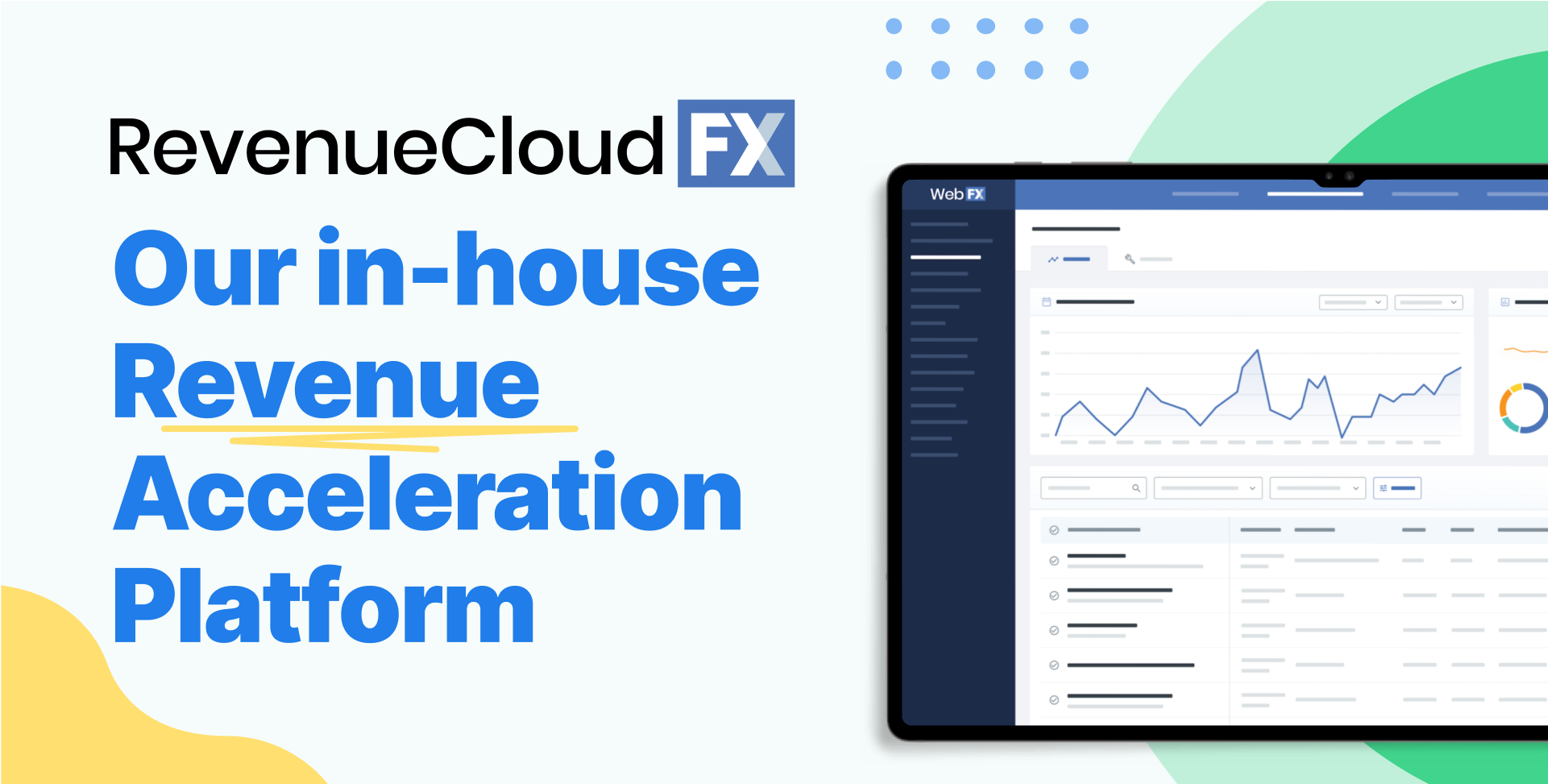-
 Published: Jul 3, 2023
Published: Jul 3, 2023
-
 9 min. read
9 min. read
-
 Maria Carpena
Maria Carpena Emerging Trends & Research Writer
Emerging Trends & Research Writer
- Maria is an experienced marketing professional in both B2C and B2B spaces. She’s earned certifications in inbound marketing, content marketing, Google Analytics, and PR. Her favorite topics include digital marketing, social media, and AI. When she’s not immersed in digital marketing and writing, she’s running, swimming, biking, or playing with her dogs.
Demand generation vs. lead generation: The difference between demand generation and lead generation is that demand generation aims to create awareness and interest in your brand. In contrast, lead generation focuses on converting your brand-aware prospects into customers.
Demand and lead generation are both vital marketing strategies to grow your business. Think of them as two critical pieces of a puzzle you must solve — you need both parts to succeed.
This blog post discusses the difference between demand generation and lead generation. We dive into the following topics to understand each strategy, how they’re different, and how to combine them:
- The difference between demand generation and lead generation
- What is demand generation?
- 4 key elements of a demand generation strategy
- What is lead generation?
- 4 key elements of a lead generation strategy
- How demand generation and lead generation strategies drive bottom-line growth
While you’re here, join our community of 200,000 marketers who stay updated on the latest digital marketing strategies by subscribing to our weekly newsletter!
Don’t miss our Marketing Manager Insider emails!
Join 200K smart marketers for the hottest marketing news and insights in your inbox.
Inline Subscription Form
“*” indicates required fields


The difference between demand generation and lead generation
The main difference between demand generation and lead generation is that demand generation creates awareness and interest in your brand, while lead generation converts your brand-aware audience into customers.
Demand generation activities happen at the top of the marketing funnel, attracting your audience’s attention and piquing their interest in your brand and offerings.
On the other hand, lead generation is at the bottom of the funnel and aims to gather your prospects’ information so you can nurture them and move them closer to purchase. Lead generation services provide targeted strategies and tools to capture and manage leads effectively.
Together, demand and lead generation strategies can drive growth for your business. This table summarizes the difference between demand and lead generation:
| Demand generation strategy | Lead generation strategy | |
| Objective | Increase awareness and interest in your brand, offerings, and how your offerings address your target customers’ needs | Convert brand-aware and interested prospects into customers |
| Key elements | – Specific, measurable, achievable, relevant, and time-bound (SMART) goals – Target market – Brand awareness tactics – Martech stack |
– Lead capture methodology – Lead scoring system – Lead nurture strategy – Martech stack |
| Relevant metrics to track | – Website traffic – Site traffic source – Impressions and reach on social media – Brand sentiment |
– Lead quality – Cost per lead – Average lead response time – Conversion rate – Customer acquisition cost |
What is demand generation?
A demand generation strategy is a set of marketing tactics that aims to attract attention and interest in your brand and offerings. In essence, it creates demand for your products and services by:
- Increasing brand awareness
- Educating your target audience
- Fostering trust among your prospects
Employ content marketing tactics like blogging and social media marketing to reach new audiences. You also increase your brand’s credibility and authority by providing helpful content for your prospects.
Learn More: Revenue Marketing vs. Demand Generation vs. Lead Generation
4 key elements of a demand generation strategy
Your strategy must have the following elements to create demand for your products:
Let’s discuss each:
1. Clear and SMART goals
While your overall objective is to amplify your brand’s visibility, you must set SMART goals so you can measure your success. Your clear goals also help you identify ways to improve your campaigns.
For example, let’s say you’re in the home security business. You want to increase your brand’s visibility by improving your ranking in search engine results pages (SERPs) and driving traffic to your website.
You can set the SMART goal of increasing your website traffic by 10% by the end of the quarter by investing more time in demand generation strategies.
2. Target market
Define the group of consumers that will use and benefit from your product. Who is your target audience, and what pain points are you trying to solve? How will your product or service address their needs?
Identifying and understanding your target audience guides your strategies so you know which marketing channels and messages effectively lead to them discovering your brand.
3. Brand awareness tactics
To ensure that your audience remembers you, employ brand awareness tactics such as:
- Search engine optimization (SEO): SEO helps your target audience find your website when they’re looking for a product or service that you offer.
- Pay-per-click advertising (PPC): Do you want your brand to reach people who search for keywords relevant to your business? Or do you want to reach Internet users interested in your brand through display ads on publishers’ websites? Consider PPC as an advertising awareness
- Social media marketing: Did you know the average daily social media usage is 145 minutes? Consider employing organic social media marketing and paid social media marketing tactics to increase brand awareness.
- Content marketing: Attract your target audience by providing valuable and shareable content. Some common content marketing examples are blog posts, ebooks, infographics, and videos.
4. Marketing tech (martech) stack
A critical component of your demand generation strategy is analytics, which can track your progress and improve your campaigns. A martech stack is a collection of marketing tools that help you manage your campaigns and analytics and improve your strategies.
One of the best tools you can add to your martech stack is RevenueCloudFX, our proprietary growth platform that can monitor your website’s performance, analyze your SEO, and consolidate data from your other tools. By having your data in an easy-to-understand dashboard, you can improve your strategies to drive results.
What is lead generation?
Lead generation is the process of increasing your prospects’ interest in your brand and products and nurturing them until they convert into paying customers.
Lead generation campaigns typically entice prospects to give their information to businesses like yours. Your sales team is assigned to nurture the leads until they close the deal.
You can generate leads through forms on your website. If your target audience is social media-savvy, you can run lead generation campaigns on social media sites like LinkedIn or Facebook.
4 key elements of a lead generation strategy
A lead generation strategy has several components, but here are four key elements you’ll need:
Let’s dive into the details for each element:
1. Lead capture methodology
Lead capture is the process of gathering prospects’ information — like their name, organization, and contact details — to become a lead, so your sales team can move them to the next stage of the sales pipeline.
Your lead capture methodology involves identifying your objectives for collecting information. Do you want them to sign up for your newsletter or your webinar? Or do you want your prospects to fill out a form with other details, like how soon they need your product or service?
In addition, lead capture also looks at the different methods you’ll implement to gather your prospects’ information:
- Lead forms: Lead forms are the most common way to obtain your prospects’ information. Our customer relationship manager (CRM) platform, Nutshell, has a form creation feature. With this feature, you can embed forms in your pages, gather customer info, and automatically save them as contacts to your CRM.
- Pop-ups: Pop-ups are popular lead capture methods to invite site visitors to subscribe to your newsletter. When appropriately executed, non-intrusive pop-ups are excellent methods of collecting prospects’ info.
- Landing pages: Great landing pages are optimized to guide your visitors to perform your desired action, which is to convert them into leads!
2. Lead scoring system
How do you know which leads to prioritize? Lead scoring assigns numerical values to the leads you generate. The higher their points, the more valuable they are to your business, and the higher they are on your priority list.
3. Lead nurture strategy
Not all your leads are ready to purchase. That’s why it’s crucial to have a lead nurturing strategy, which will take care of follow-up communication techniques that will move your leads closer to purchase.
4. Martech stack
Finally, you need a martech stack to track, measure, and analyze your results. With a martech stack, you can identify your lead sources and spot patterns to know what’s driving results for your team.
You can create a custom dashboard with RevenueCloudFX’s LeadManagerFX feature to measure your lead generation strategy’s return on investment (ROI).
How demand generation and lead generation strategies drive bottom-line growth
Now that you know the difference between demand generation and lead generation, you might be wondering: Which one does my business need?
Businesses need both demand and lead generation to have a healthy pipeline and number of leads to nurture into customers. Think of demand and lead generation strategies as unique and essential growth drivers.
For example, let’s say you’re a dentist and run your own dental clinic. You’d like more of your target audience within your location to know about you and your dental services.
Demand generation strategies like local SEO can reach more people in your vicinity so that they’ll learn more about your dental clinic and your offerings. Content marketing can also improve your visibility when someone searches for dental health.
For example, if you have a special package for routine exams and cleaning, you can implement lead generation strategies to inform your brand-aware audience about your offer. When a user visits your landing page, you can ask for their contact information in exchange for the package’s voucher.
Our digital marketing campaigns impact the metrics that improve your bottom line.
See Our Approach
$10 billion

24 million

7.14 million
Ready to carry out demand and lead generation campaigns to grow your business?
It takes a village to implement demand and lead generation strategies. That’s why if you need help, you can turn to WebFX.
We’re a full-service digital marketing agency with over 29 experience in 200+ industries. We’ve helped our clients generate over 24 million qualified leads and more than $10 billion in revenue. Our team is pumped to drive the same results for your business.
Aside from the expertise of digital marketers, you also get to use our proprietary growth platform RevenueCloudFX. With RevenueCloudFX, you can easily track the important metrics and identify which campaigns drive results, enabling you to improve your campaigns and streamline your processes.
You also get at least 10 seats in our user-friendly CRM Nutshell. Creating lead forms and performing lead scoring is made easy with Nutshell. It can also automate specific tasks, thus streamlining your process.
Contact us online or call us at 888-601-5359 to speak to a strategist about our digital marketing services!
-
 Maria is an experienced marketing professional in both B2C and B2B spaces. She’s earned certifications in inbound marketing, content marketing, Google Analytics, and PR. Her favorite topics include digital marketing, social media, and AI. When she’s not immersed in digital marketing and writing, she’s running, swimming, biking, or playing with her dogs.
Maria is an experienced marketing professional in both B2C and B2B spaces. She’s earned certifications in inbound marketing, content marketing, Google Analytics, and PR. Her favorite topics include digital marketing, social media, and AI. When she’s not immersed in digital marketing and writing, she’s running, swimming, biking, or playing with her dogs. -

WebFX is a full-service marketing agency with 1,100+ client reviews and a 4.9-star rating on Clutch! Find out how our expert team and revenue-accelerating tech can drive results for you! Learn more
Try our free Marketing Calculator
Craft a tailored online marketing strategy! Utilize our free Internet marketing calculator for a custom plan based on your location, reach, timeframe, and budget.
Plan Your Marketing Budget
Table of Contents
- The difference between demand generation and lead generation
- What is demand generation?
- 4 key elements of a demand generation strategy
- 1. Clear and SMART goals
- 2. Target market
- 3. Brand awareness tactics
- 4. Marketing tech (martech) stack
- What is lead generation?
- 4 key elements of a lead generation strategy
- 1. Lead capture methodology
- 2. Lead scoring system
- 3. Lead nurture strategy
- 4. Martech stack
- How demand and lead generation strategies drive bottom-line growth
- Carry out demand and lead generation campaigns

Proven Marketing Strategies

Proven Marketing Strategies
Try our free Marketing Calculator
Craft a tailored online marketing strategy! Utilize our free Internet marketing calculator for a custom plan based on your location, reach, timeframe, and budget.
Plan Your Marketing Budget
What to read next






